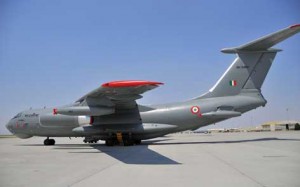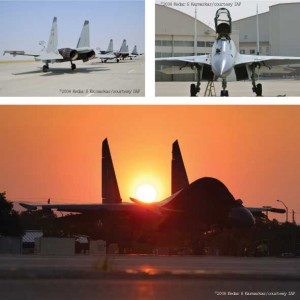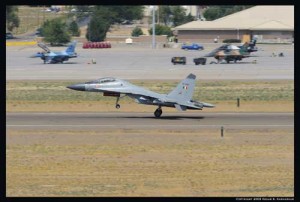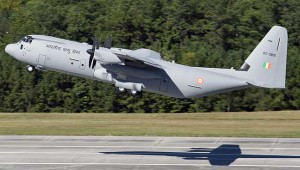Planning for the future has always been a daunting task, especially when it concerns the military of a nation. As the military is a vital component and in fact the ultimate instrument of national security, improper assessment or gross miscalculation of its pattern of development can have catastrophic ramifications. The task of forward planning is rendered particularly difficult in a scenario where long term plans need to be evolved in a coordinated fashion amongst the three wings of the Armed Forces – the Army, Navy and the Air Force. Also, for any long term planning to be meaningful, two inputs are prerequisites for military planners – a clear long term strategic vision for the nation, and assured availability of resources commensurate with national security imperatives, in that order.
In the Indian context, the lofty and fiery rhetoric on both these aspects emanating from the highest levels of governance have rarely crystallized into reality. Over the last six decades since Independence, in the Indian Air Force (IAF) there has been piecemeal acquisition of hardware as cleared by the civilian bureaucracy to be sanctioned by the political leadership on the basis of stand alone case-by-case justification and not in conformity with any long term national plan. Possibly there has been none. The process of acquisition of new equipment has generally followed a pattern of one to one replacement with equipment procured from a source that is either the cheapest, politically expedient or both. Acquisition of hardware has often been contingent not on the availability of resources but on allocation of funds.
Obsolescence In The IAF
For decades the IAF had largely been tethered to one non-western source. Much of the inventory acquired through this route has now been overtaken by obsolescence. As a result, in recent years, there has been an alarming erosion in combat power and other capabilities. Even after prolonged and reportedly vigorous effort, the indigenous Research & Development Organisations and the Aerospace Industry have not been able to provide a respectable degree of self reliance to the IAF. The near total dependence on foreign sources for cutting edge technology and frontline equipment is potentially perhaps the most debilitating factor that often threatens to seriously undermine the capability of the IAF.
 Despite the limitations, the IAF has managed to attain and project an image of a potent force capable to preserving the sovereignty of the Indian skies and in more recent times, to project power albeit limited in quantum and reach. And even in the future there appears to be no option but to procure advanced technology and hardware from abroad. There is however an attempt to indigenize products through co-development, co-production and the difficult, but innovative, concept of “Offsets”. Though not the best, this route is the most expedient under the circumstances to accord military hardware a semblance of Indian character.
Despite the limitations, the IAF has managed to attain and project an image of a potent force capable to preserving the sovereignty of the Indian skies and in more recent times, to project power albeit limited in quantum and reach. And even in the future there appears to be no option but to procure advanced technology and hardware from abroad. There is however an attempt to indigenize products through co-development, co-production and the difficult, but innovative, concept of “Offsets”. Though not the best, this route is the most expedient under the circumstances to accord military hardware a semblance of Indian character.
Life of a modern weapon system is in the region of thirty years which is normally extendable by another 10 to 15 years after a mid-life upgrade. New equipment procured for the IAF over the next decade will remain operational up to 2050 at the very least, possibly up to 2060. As the nature of warfare itself is undergoing transformation, it is necessary to make a comprehensive reassessment of the contours of the operational scenario that the IAF will have to contend with and reconfigure its inventory accordingly. To do this at this point in time, the IAF needs to take note of India’s regional power status in the emerging world order and assess its possible role and responsibility in the new geopolitical and geostrategic environment.
The Pakistan Factor
In view of the asymmetry, Pakistan is unlikely to take the initiative for large scale conventional military operations against India. While it will continue to retain the capability to put up stout defence against any assault, as indications are, it is more likely to engage in clandestine warfare against India in a variety of ways, some of which were amply demonstrated by way of attack on the Parliament in 2001 or the raid on Mumbai in November 2008. Such operations should no longer be seen as purely internal security problems.
Our land and sea borders are extensive and quite impossible to seal through measures on the ground – such as erection of physical barriers or through the deployment of paramilitary forces/civil police that are riddled with porosity on account of corruption. In the present scenario, it is relatively easy for the well trained enemy agents or commandos collectively described by India as “terrorists”, to penetrate unsecured borders and inflict disproportionately high levels of damage and human casualties. It should not come as a surprise if the various religious, political and social divides that afflict the nation actively facilitate such operations by the enemy.
 Despite the perceived success in the recently held elections in the State of Jammu and Kashmir, the end to the turmoil is not in sight. There is no doubt that Pakistan will continue its campaign in the state, in all likelihood, with renewed vigour and intensity to turn the tide against India. The techniques of warfare and tactics adopted by Pakistan in J&K will be similar to those employed by other regions in India and possibly with an enhanced level of support from the local populace.
Despite the perceived success in the recently held elections in the State of Jammu and Kashmir, the end to the turmoil is not in sight. There is no doubt that Pakistan will continue its campaign in the state, in all likelihood, with renewed vigour and intensity to turn the tide against India. The techniques of warfare and tactics adopted by Pakistan in J&K will be similar to those employed by other regions in India and possibly with an enhanced level of support from the local populace.
The induction of nuclear weapons in South Asia has added a new dimension to the Indo-Pak military confrontation. Pakistan is believed to have unknown quantities of Chinese supplied nuclear weapons and has the capability to deliver these using surface-to-surface missiles with adequate range to cover most important cities and targets of strategic value. India too has nuclear weapons and has one advantage over Pakistan wherein the latter lacks strategic depth. In order to neutralize the Pakistani nuclear threat and raise their threshold substantially, India needs to enlarge her own nuclear arsenal and diversify her delivery capability with bias towards surface-to-surface missiles complemented by combat aircraft in the ratio 75:25.
The nuclear warfare capability needs to be developed to the extent necessary to obliterate most cities in Pakistan in a single strike and this capability must be clearly made known to them by direct or indirect means. With such a capability in being, there would be a high probability that Pakistan would be deterred from first use of nuclear weapons. Although the President of Pakistan, Asif Ali Zardari has proclaimed a “no first use” policy, it would not be prudent to take this assurance at face value and neglect or delay the build up of own capability. We need to bear in mind the principle that nuclear weapons are not meant to win but to prevent wars.
Against the traditional enemy with whom India has fought three major conventional wars since Independence and who now is engaged in aggressive subversion in different parts of the country, it should be clear that in the future, the traditional military posture will progressively become less relevant as the clandestine warfare of the future will have no clearly defined fronts. This would necessitate redefined doctrines and restructured inventory. First and foremost, there has to be a profound qualitative change in the capability of surveillance and communication intelligence through extensive employment of aerial platforms.
Surveillance platforms parked at medium to high altitudes must be capable of providing resolution of a few centimeters with all-weather capability through cameras in the optical and infrared frequency range, Synthetic Aperture Radar or other new generation sensors to be introduced in the future. These advanced sensors need to be mounted on new generation Unmanned Aerial Vehicles (UAV) with continental range and high endurance capable of being controlled and operated thousands of miles away from parent base through satellite based data link.
The nuclear warfare capability needs to be developed to the extent necessary to obliterate most cities in Pakistan in a single strike and this capability must be clearly made known to them by direct or indirect means.
Such a system can provide round-the-clock cover of any part of land and sea frontiers as also inland areas of the nation. This will obviate the need to reposition the bulky control infrastructure in different parts of the country. The airborne platforms must also carry powerful and agile sensors to record, identify and pin-point the source of all radio transmissions on a wide range of frequency bands. Intelligence gathering through UAVs on continuous patrol would have to be supported by high speed, possibly automated intelligence data processing and analysis systems, which should include capability of integration with intelligence inputs from other agencies.
Threat thus analyzed must be available in the shortest possible time to security agencies required to respond. For swift response, an effective method is vertical envelopment through a heli-borne force with the helicopter fleet dedicated to this task, data linked with the UAV to get a real time view of the objective.
The ever increasing cost of fixed wing combat aircraft and their weapons, as also substantially enhanced lethality of enemy air defence weapon systems, would render employment of such aircraft both in the deep strike role and in the tactical battle areas, less and less cost effective in the future. It would be necessary therefore to place greater reliance on surface-to-surface missiles for deep strike against heavily defended targets in depth such as airfields. In the tactical battle area the fixed wing combat aircraft would have to be replaced by Unmanned Aerial Combat Vehicles (UCAV) and rotary wing platforms with stand-off weapons, both integrated with the ground forces. Fixed wing aircraft when employed would have to be effectively protected through versatile electronic warfare capability. Strategic Air Defence capability of the IAF would have to be augmented through the enlargement of the fleet of AWACS and AEW aircraft . These systems would effectively close the prevalent gaps in the low level surveillance capability of the IAF. Simultaneously, it would be necessary to induct new air defence missile systems for area and point defence and revamp electronic warfare capability across the board.
China, an Emerging Superpower
Riding the wave of stupendous economic growth, China has emerged as a major regional power and has clear aspirations to be a global power in the not too distant future. Despite prolonged dialogue, there has been no progress in the settlement of Sino-Indian border dispute and none is likely in the foreseeable future. China is a nuclear power and is currently embarked on a major upgrade of its somewhat outdated military machine. She has enlarged her sphere of influence in Asia and has effectively thrown a cordon around India through political, economic and military support to all the immediate neighbours. India’s growing proximity with and subservience to the US consequent to the Indo-US nuclear deal, has clearly pushed India on to the opposite side of the international political divide. With this development, the possibility of rapprochement with the emerging superpower has practically receded into oblivion. In the long term perspective, China is potentially a greater military threat to India than Pakistan is.
 Thus it would be unwise for India to depend solely on diplomacy or support of the US to secure the nation against the awakening giant in the north. The limitations of diplomacy without the backing of military power have so clearly been exposed in the confrontation with Pakistan in the wake of 26/11. If India’s diplomatic demarche has not succeeded against Pakistan which is relatively a weak state, it would be naive to assume that it will be effective against China. The character and level of threat from China is qualitatively different and the nation’s armed forces must be geared to meet the long term threat beginning to loom over the horizon. Finally it would be the armed forces that would have to face the consequences of diplomatic failure and bear the brunt of a Chinese offensive in any form.
Thus it would be unwise for India to depend solely on diplomacy or support of the US to secure the nation against the awakening giant in the north. The limitations of diplomacy without the backing of military power have so clearly been exposed in the confrontation with Pakistan in the wake of 26/11. If India’s diplomatic demarche has not succeeded against Pakistan which is relatively a weak state, it would be naive to assume that it will be effective against China. The character and level of threat from China is qualitatively different and the nation’s armed forces must be geared to meet the long term threat beginning to loom over the horizon. Finally it would be the armed forces that would have to face the consequences of diplomatic failure and bear the brunt of a Chinese offensive in any form.
First and foremost, the IAF must have the capability to counter China’s nuclear capability through a missile based credible nuclear deterrence. Simultaneously, the Sino-Indian borders need to be kept under surveillance through satellites and unmanned platforms. The IAF must also acquire the capability to launch precision attack in mountainous areas from high altitude using advanced precision guided munitions. In addition, it must have the capability to neutralize targets with mobile units of surface-to-surface missiles with conventional warheads in coordination with target data obtained from UAVs.
Space
A completely new dimension in future wars would be the employment of space-based assets for reconnaissance, surveillance and communication. There has been some progress in this area but much more needs to be done. However, the new problem that is emerging is the security of the space-based assets. There appears to be no clear solution at this point in time except for multiple redundancy which may be expensive and impractical. In addition to space-based assets, the IAF needs to acquire the capability to neutralize space-based capability of the enemy through hard or soft kill techniques with weapon systems located on the ground or mounted on airborne platforms.
Power Projection Capability
A major responsibility of the IAF in the future would be in the area of strategic airlift. Internal security compulsions will place growing demand for the movement of quick reaction as also regular security forces within the country on short notice.
To provide effective air defence of the homeland, the IAF needs to acquire a fleet of AWACS and AEW aircraft over and above the few already on order to enhance surveillance capability at low level.
Given its emerging regional power status and the newly forged strategic partnership with the US if not abrogated by the incoming administration, India may be called upon to project power in the region which may involve airlift of large military forces to areas of interest of either of the partners in the region outside our borders and to provide sustained logistic support. Strategic airlift capability of the IAF would therefore need to be built up practically from scratch as the existing fleet is fast approaching the end of its total technical life.
At the tactical level, the IAF should be equipped with a fleet of medium tactical transport aircraft and helicopters capable of speedy response with special forces over shorter ranges.
The IAF has taken some baby steps towards acquiring the capability of projecting combat power in the region. At this point in time, the capability is limited to a token force and cannot be described as significant. However, while steps are in hand to augment the existing fleet of long range combat aircraft as also to acquire a new fleet, the capability of power projection would in the ultimate analysis be limited by the size of the fleet of in-flight refuelling aircraft. This fleet would have to be suitably enlarged for any meaningful power projection that is capable of making an impact.
Summary
To summarise, the IAF needs to enhance some of the force multipliers already on the inventory as also to develop a range of new capabilities both in the strategic and tactical regimes. At the strategic level, the IAF must be able to provide the nation with credible nuclear deterrence against Pakistan and China. Also, it should be capable of power projection in its perceived area of national security interests and those of our ally in the region beyond the national borders with combat aircraft, in-flight refuelling and strategic airlift capability. These forces should be geared to provide swift response to a crisis situation and be able to provide logistic support to sustain forces for significant length of time. For strategic strike deep into enemy territory, the IAF needs to have a combination of missile based and airborne platforms, the latter with powerful electronic warfare equipment to suppress and defeat enemy air defence systems. Tactical roles may be transferred to UCAVs and helicopters.
To provide effective air defence of the homeland, the IAF needs to acquire a fleet of AWACS and AEW aircraft over and above the few already on order to enhance surveillance capability at low level. New generation area and point defence missile systems need to be inducted to replace the ageing and obsolete systems currently deployed. For strategic and tactical intelligence, the IAF must have its own satellite systems and a fleet of UAVs with a range of advanced sensors to provide all weather day and night capability. The fleet of UAVs should be adequately supported by appropriate ground infrastructure for automated and speedy processing of intelligence information, and fleet of tactical transport aircraft and helicopters for quick response with special forces.
It goes without saying that in future wars, the IAF must be geared to operate in a network-centric environment. But perhaps most important of all, there is the imperative need for the IAF to shed the defensive mindset.





